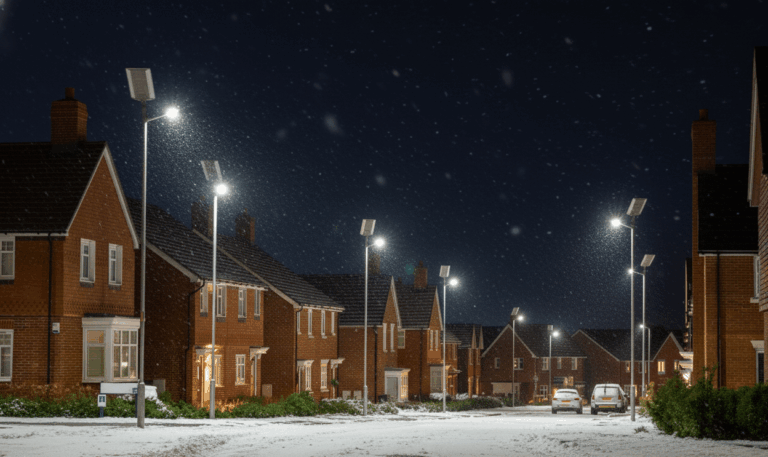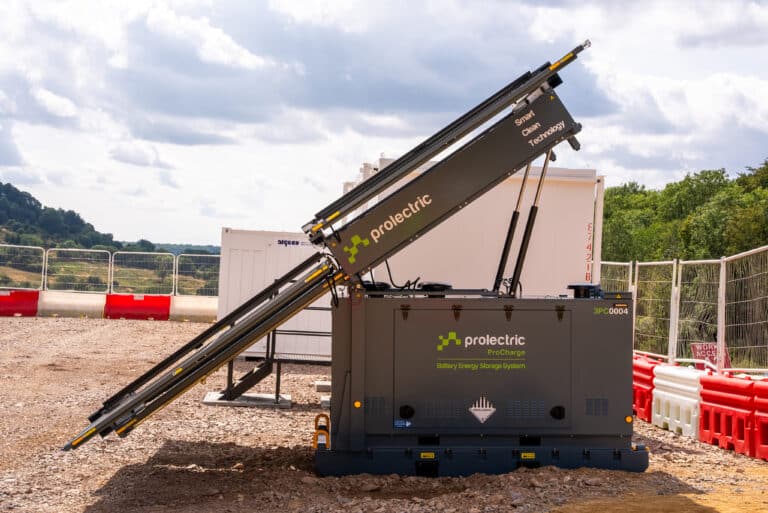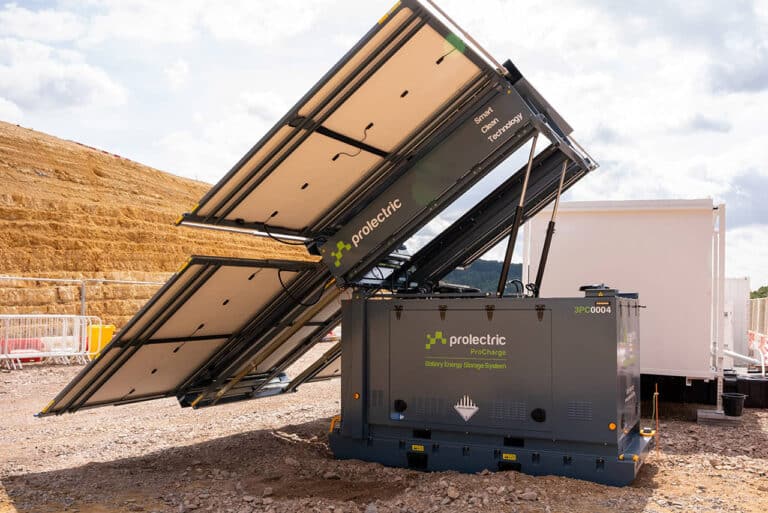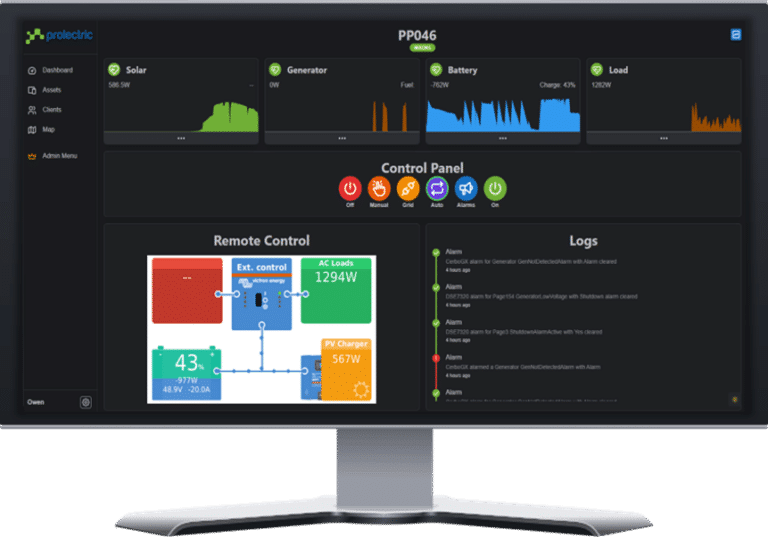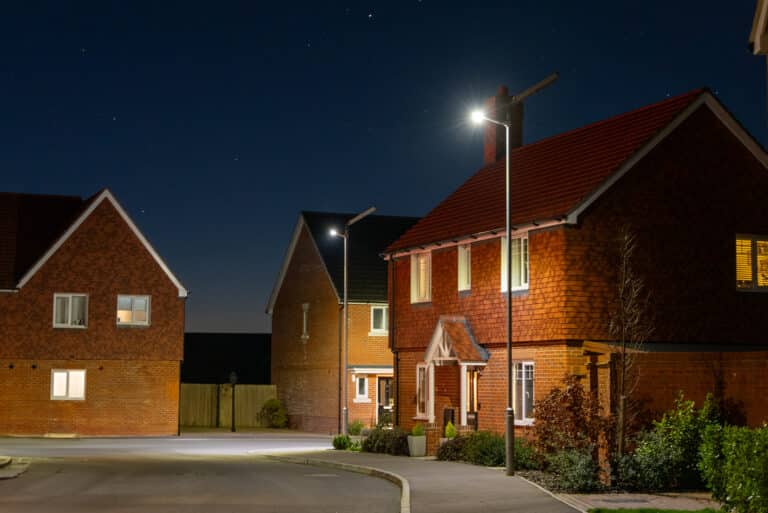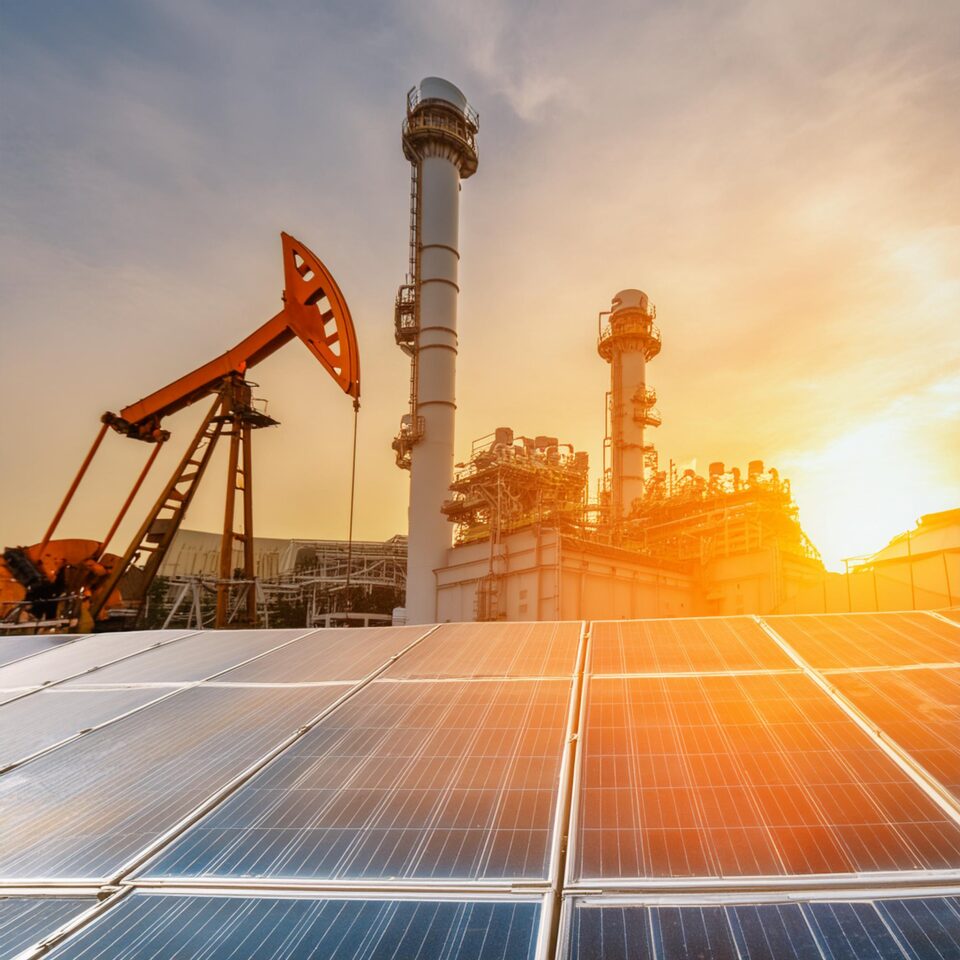
The UK has set a target of net zero carbon emissions by 2050.
The construction industry is a key player in achieving this goal, through both construction methods and building designs. Progress in cutting carbon emissions is slow owing to the fragmented nature of the industry and its traditional working practices. For example, while some companies are adopting sustainable onsite power generation, others are reluctant to move away from polluting diesel generators despite new technology offering proven reliability and significant cost savings.
In this paper, we will analyse the options for onsite power, both legacy and sustainable, and examine what is preventing the construction industry adopting sustainable onsite power.
Legacy onsite power options
In the past, there were fundamentally two options for power onsite: diesel generators or a grid connection. In most cases, a grid connection isn’t viable owing to significant costs and the time it takes for a connection to be installed. In recent years, HVO biofuel (also known as green diesel, made from used vegetable oils) has emerged as an alternative fuel for diesel generators and battery storage systems have also appeared as an option. All these methods of delivering power onsite have drawbacks:
Diesel generators
Hugely carbon emitting, noisy, polluting, expensive to fuel and maintain.
HVO generators
Less of a carbon footprint than diesel but similarly noisy and polluting – and more expensive to fuel and maintain. The supply of HVO is limited by the amount of reclaimed vegetable oil available. Increasing production beyond this would mean using agricultural land to grow crops, increasing its carbon footprint. In addition, the handling of HVO onsite can be messy and challenging.
Battery storage systems
Can be charged with green electricity but the batteries need to be taken off-site for recharging, which generate more carbon emissions during transport. The need to have multiple sets, so that drained batteries can be interchanged with recharged ones when needed, adds to the cost of hardware and maintenance. Alternatively, they are recharged onsite via diesel generators, removing virtually all of the environmental benefits of the BESS.
Grid connection
In theory a grid connection can deliver zero carbon power from a green electricity supplier. However, grid connections are expensive and time consuming to set up and cannot be moved once installed.
Sustainable onsite power generation
There are significant benefits to generating power onsite using sustainable technology. Solar, wind and, to a lesser extent, biomass generators can dramatically lower a site’s reliance on fossil fuels, as well as reducing noise and particulate pollution. In addition to reducing carbon emissions, this creates a healthier environment for workers and neighbouring communities.
There are economic benefits compared to traditional diesel generators, which have larger fuel and operative costs in terms of refuelling and maintenance. The Prolectric ProPower, for example, creates free energy using solar power and is virtually maintenance free.
There are three primary options for onsite power generation, which reflect the prevailing sources of sustainable power generation in grid-scale electricity: solar, wind and biomass.
Solar power
Portable solar generators are the leading sustainable solution for onsite power generation. Solar is now a proven, mature technology even in the depths of winter. As costs continue to plummet, analysts are predicting it will be the biggest single source of power worldwide by 2050.
Genuinely portable solutions such as the Prolectric ProPower are trailer-mounted for fast installation, and able to generate power as soon as the panels are unfurled. An integrated battery system ensures the system can also provide power during the night, making it near zero carbon and marginal maintenance (bi-annual). Remote monitoring and diagnostics eliminates the need for site visits, while a backup diesel generator gives peace of mind in the event of unexpected power needs.
There is another option for onsite solar, in the form of ground mounted solar arrays. However, these are generally unsuitable for site use, as they are permanent or semi-permanent installations that take considerable time, expertise and investment to install and remove.
Pros: Free energy, near zero carbon, minimal maintenance, mature and reliable tech, backup generator, setup and forget technology
Cons: Some systems are more portable than others, important to choose a manufacturer with a proven record of building solar systems that work throughout the British winter
Wind power
Small wind turbines produce electricity in the same way as the giant turbines that populate large-scale land and sea wind farms. Like solar, wind power is free and operationally carbon zero but there is a downside for onsite use, which is that a period of calm weather can mean no power generation for days on end.
While the UK is blessed with lots of wind, most of the reliable resource is in Scotland, which is why onshore wind farms are concentrated there. Local topography can also lead to dead spots in wind, so turbines must be as tall as possible to catch the breeze. This makes creating a genuinely portable and reliable onsite wind-based power generator more difficult and expensive than solar. Additionally, in comparison to solar, the moving parts in wind turbines mean more maintenance, downtime and site visits.
Pros: Free energy, zero carbon, relatively quiet
Cons: No wind means no power, trickier siting and setup, higher maintenance demands
Biomass power
Biomass generators create electricity by burning organic materials such as wood chips or compressed wood pellets. The generators create steam, which spins a turbine and produces electricity. While proven for grid scale power generation, portable biomass technology is still in its infancy.
The carbon reduction credentials of biomass generators are challenged by some experts. In theory, the carbon released during burning is matched by the carbon locked away by the tree during its lifetime. However, some trees take several decades to grow and lock in the carbon, meaning that if it is carbon neutral, it is across a long-time span. Biomass also had an issue with particulates, as is common with all forms of burning. Filtering technology is designed to prevent the release of these pollutants into the atmosphere.
Operational costs are higher than with both solar and wind. Biomass needs fuel delivered to site, offloaded and stored, and the generator needs to be topped up regularly and monitored to ensure it is burning efficiently.
Pros: Zero carbon in theory, relatively quiet
Cons: Continuing arguments over whether biomass can genuinely be classified as carbon neutral, high operational costs, potential particulate pollution, can take several hours to start up a biomass generator
What’s stopping the switch?
There are a number of factors that are combining to delay the construction industry adopting more onsite power creation. The main issues are:
Stuck on diesel
The construction market is traditional and slow to change. Companies and individuals have relied on diesel generators for decades. They understand them and they know how to use them, so there can be a fear factor around switching to a new system – some may ask “if it ain’t broke, why fix it?”. The answer, of course, is that diesel is broken at a fundamental level. Construction companies and the industry as a whole understand that the move to zero carbon emissions is necessary and right, but some are unsure about the reliability of renewables.
Prolectric’s lighting solutions and solar hybrid power generators have been proven in the field over the past decade. They work in all weathers and through the shortest days in winter, when solar generation is at its most challenging. Not all manufacturers can say the same, so the concern about reliability is understandable. However, the solution is to choose a solar generation manufacturer that has proven to deliver.
Concerns about cost
A solar hybrid generator such as Prolectric’s ProPower might have a higher upfront cost of purchase but the total cost of ownership is significantly lower. With an average annual fuel cost saving of £14,683, a reduction of 25,388 kg CO2e and saving of £18,329.41 on operational costs it’s a smarter investment with much greater return. The ProPower becomes cost neutral after just 2 years, looking at the big picture and considering your fleet whether small or large, switching to solar is the logical decision.
If a company hires a ProPower for 12 months, they save an average of over £11k compared to diesel, when hire and fuel costs are taken into account. The average ProPower diesel consumption saving is 73.6%.
Construction companies are increasingly discovering that sustainable onsite generation is saving them significant money, as well as dramatically reducing their carbon emissions.
Over estimating power requirements
It can be difficult to accurately estimate the power requirements for a construction site. Hire companies without an in-depth knowledge of their customer’s needs may take a common approach, which is to go off the number of 32A sockets needed. For example, ten sockets drawing a maximum of 8kW would require generation of roughly 100kVA, which is what they might recommend even if the real requirement on site is significantly lower.
In the past, a ‘just in case’ approach, where power requirements are deliberately oversized so that there is no chance of being caught out, was understandable. However, in recent years site managers have had more reason to understand their power requirements with an increasing focus on being efficient. Telemetry aboard generators such as the Prolectric ProPower deliver information on peak and average loads to help understand power onsite. This enables companies to specify the right size of generators to cover their needs, without overspending on capacity that is never used.
Aside from the cost of machinery, there is a hidden cost in oversizing diesel generators. They work most efficiently at 75% load, so if the average load is lower owing to an over specified generator, fuel costs will be higher. Another problem with modern Stage V emission standards diesel generators is that they are highly inefficient at low loads below 25% and become increasingly likely to break down. Solar hybrid generators such as the Prolectric ProPower can handle lower loads using free energy from battery/solar cells, with the backup diesel generator only being used at higher load levels, if it is required at all.
Supply chain and vendor relationships
It is a fact of life that established relationships with traditional suppliers can create inertia. Construction firms may be reluctant to disrupt these relationships through loyalty or may lack access to suppliers of onsite power generation equipment and services.
Some hiring businesses have already expanded their fleets to include more sustainable onsite generation options, which will serve them well for the future. While slower moving companies may be able to rely on customer loyalty for a time, they will have to scramble to catch up when their customers realise the savings that their competitors are making on power generation.
Space issues
Some construction companies may be concerned about the space that sustainable power generators require onsite. A tall wind turbine is unwieldy and even the smallest biomass generators are generally ‘moveable’ rather than portable.
However, the footprint of the Prolectric ProPower is less than 5m x 4m with the solar panels unfurled. What is more, the entire unit can be trailer mounted for simple transportation within or between sites.
Conclusion
The construction industry is committed to doing its part in getting the UK to net zero by 2050. However, there is a recognition that some parts of the industry are traditional and slow to change, as can be seen in the continued use of diesel generators for onsite power when viable sustainable alternatives exist.
As we have seen, there are several potential reasons behind the slow pace of change. Worries about the reliability of new technology, concerns over cost, space and power capability, as well as existing supply chain relationships, may all be factors.
There is an element of safety in sticking with what is proven to work but as more construction companies adopt sustainable generators such as the Prolectric ProPower, the benefits become ever clearer: reliable and efficient power, even through the dark British winters, coupled with cost savings of over £11k per year in a compact, portable unit.
Financially and operationally, the time to move to sustainable onsite power generation is now. The technology is mature and proven, as are the cost savings. Every day that you delay, is a day you are paying more for carbon emitting diesel generators.







